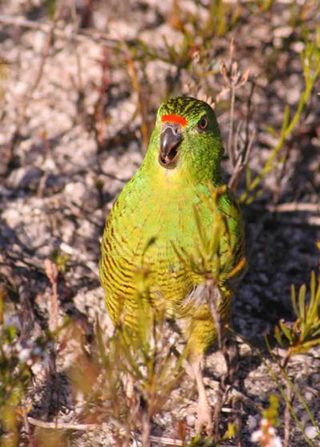
New Parrot Species Discovered in Western Australia

DNA experts from Australia have discovered that dwindling populations of ground parrots in Western Australia belong to a different species than those found in the rest of the country, a find with important conservation implications.
A team of researchers from the University of Adelaide and the Australian Wildlife Conservancy used DNA from 160-year-old museum specimens to learn of distinct differences between the ground parrots in the east and west and that the western populations should be recognized as a new species. It has been named Pezoporus flaviventris.
The DNA study suggests the two species diverged from each other some 2 million years ago.
"Our findings demonstrate that museum collections, some going back more than 150 years, continue to be relevant and can provide critical information for understanding and conserving the world's biodiversity into the future," said team member Jeremy Austin, of the Australian Centre for Ancient DNA at the University of Adelaide.
While excited about the discovery, researchers were also concerned for the survival of these newly classified birds.
"The discovery has major conservation implications," said team member Stephen Murphy of the Australian Wildlife Conservancy. "The western ground parrot has declined rapidly in the last 20 years; there are now only about 110 birds surviving in the wild, and most of these are confined to a single national park. It is now one of the world's rarest birds."
Several threats loom for the parrots.
Sign up for the Live Science daily newsletter now
Get the world’s most fascinating discoveries delivered straight to your inbox.
"A single wildfire through the national park or an influx of introduced predators, such as cats, could rapidly push the species to extinction. There is now an urgent need to prevent further population declines and to establish insurance populations into parts of the former range," said team member Allan Burbidge of the Western Australia Department of Environment and Conservation.
The study's findings were published this month in the international conservation research journal Conservation Genetics.
- 10 Species You Can Kiss Goodbye
- Image Gallery: Endangered and Threatened Wildlife
- 'Match.com for Penguins' Breeds Success at New England Aquarium
This article was provided by OurAmazingPlanet, a sister site of LiveScience.
Most Popular



